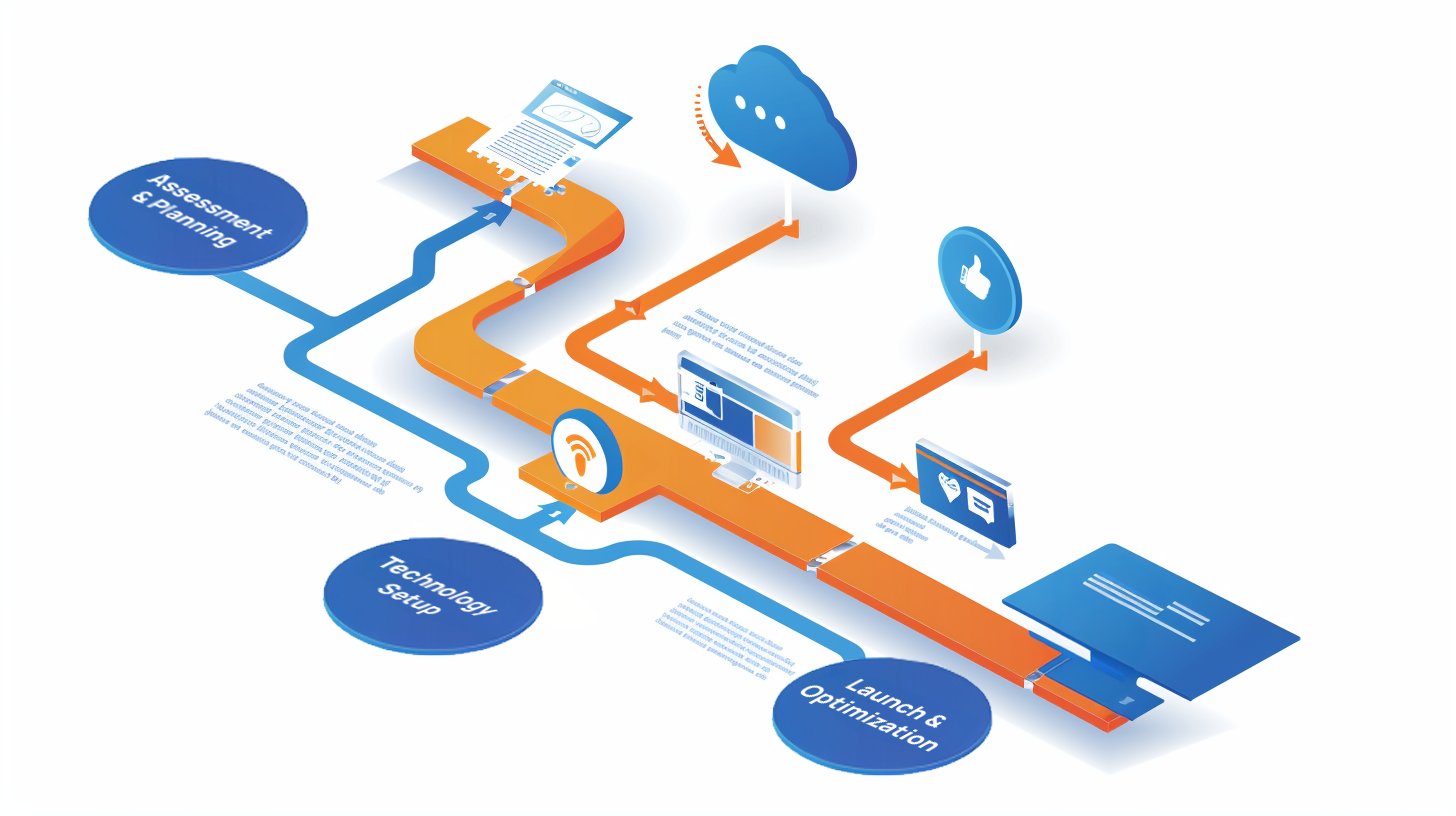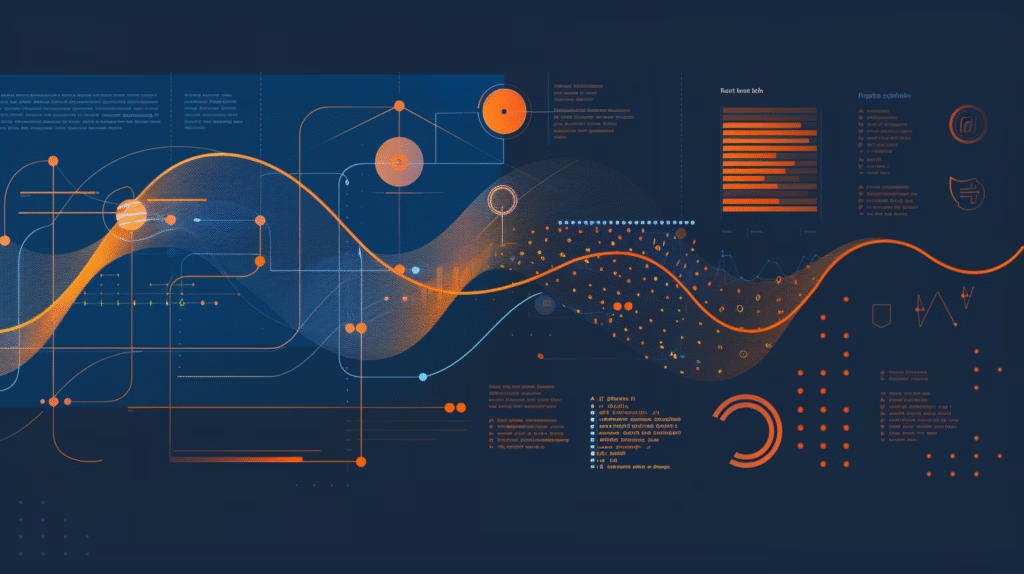Your customer just called about an account issue. After 20 minutes on hold, they hung up and sent an email. When your agents respond, they ask for the same information your customer already provided over the phone. Frustrated, your customer tweets about the terrible experience and starts shopping with your competitor.
Poor customer experience drives potential clients away faster than almost any other factor, yet most companies still operate with disconnected service channels that create more problems than they solve.
An omnichannel contact center changes everything. Instead of juggling separate systems for voice, email, chat, and social media, you get one unified platform where every customer interaction is logged.
In this comprehensive guide, you’ll discover:
- Why customer communication preferences are changing and how businesses are adapting their support strategies.
- How to plan your omnichannel contact center implementation with the right technology.
- How to evaluate success and track performance over time.
By the end of this guide, you’ll understand exactly why omnichannel contact centers have become essential for keeping customers happy.
What Makes an Omnichannel Contact Center Different from Traditional Call Centers
An omnichannel contact center transforms how your business connects with customers. Think of it as a central hub where voice, email, text, chat, and social media conversations flow through one unified platform. Every message is tied to a single customer profile, allowing agents to view complete conversation histories and pick up exactly where the last interaction left off.
Omnichannel vs Multichannel vs Traditional Call Centers
Traditional Call Centers:
- Voice-only communication.
- Limited customer data visibility.
- High agent workload per interaction.
Multichannel Contact Centers:
- Supports voice, email, chat, SMS, and social media.
- Enables teams to manage customer interactions across platforms.
- Offers performance insights across individual channels.
- Compatible with CRMs and call handling tools for context tracking.
Omnichannel Contact Center Software:
- Integrated communication channels with unified customer data.
- Real-time conversation history synchronization across all touchpoints.
- Seamless channel switching with full context preservation.
- AI-powered routing and automation capabilities.
Your customers live in a digital world. They text friends, order dinner through apps, book travel online, and manage banking from their phones without making a single call. These habits shape how they expect to interact with your business as well.
The Financial Impact of Omnichannel Contact Center Solutions
Customer support—especially phone support—requires significant resources. Each call requires an agent’s complete attention, and factors such as wait times, transfers, and lengthy resolution times drive costs higher. Phone support also limits the number of customers one agent can assist at once.
Cloud-based platforms like a virtual contact center or omnichannel solution operate differently. One agent can handle several conversations simultaneously; digital channels don’t require the same real-time intensity as phone calls. This efficiency translates directly into lower labor costs while maintaining service quality.
Reducing Agent Turnover Costs
Taking phone calls all day is exhausting. The constant pressure of live conversations, difficult customers, and time constraints leads to agent burnout and high turnover rates. When agents burn out, you face the expense of recruiting, hiring, and training replacements.
Omnichannel contact center environments change this dynamic by giving agents:
- Variety in their work through multiple communication channels, rather than relying solely on phone interactions.
- More control over their pace with asynchronous messaging that doesn’t require immediate responses.
- Breathing room between interactions to provide thoughtful, quality support.
Happier agents stay longer, require less supervision, and deliver better customer service. This reduces your hiring costs, improves customer experiences, and builds customer loyalty simultaneously.
Cost Efficiency Through Strategic Channel Mix
The real financial advantage comes from matching channels to interaction types.
This optimization delivers cost benefits through:
- Better resource allocation – handle more customer inquiries with the same staffing levels.
- Automatic documentation – digital channels create interaction records without manual note-taking.
- Reduced administrative time – less time spent on post-call notes and follow-up tasks.
Improved channel utilization – match simple inquiries to efficient channels, complex issues to phone support.

Essential Technology Requirements for Omnichannel Contact Center Implementation
Your omnichannel contact center requires a robust technology foundation. Here are the essential components for successful implementation:
Core Platform Features
- Real-time dashboards display live queue status, agent availability, and performance metrics, enabling managers to make informed staffing decisions. Additionally, they monitor customer preferences to optimize service and tailor coaching accordingly.
- The unified inbox brings all customer messages—email, chat, SMS, and social media—into one interface, allowing agents to avoid switching between tools and ensuring a personalized and efficient experience. It also allows you to queue and distribute interactions intelligently across channels, so if one agent can handle three web chats and one SMS at a time, the system controls that flow, unlike disconnected systems that overload agents without awareness of their total capacity.
- Automatic interaction logging captures every conversation across all channels, not just for compliance, but also to shorten handle times and give agents the full context needed to deliver a smoother client experience.
- Intelligent routing distributes inquiries to the most qualified agents available, based on their skills and availability, ensuring a personalized and efficient experience for customers.
An omnichannel contact center enables the delivery of consistent, high-quality support across all channels, thereby enhancing customer satisfaction and loyalty.
Essential Integrations
- A CRM connection that automatically updates customer profiles with each interaction, giving agents instant access to purchase history and previous issues, enhancing customer relationship management.
- Tools like real-time reporting software for tracking KPIs across channels, workforce scheduling tools to align staffing with forecasted demand, and analytics platforms that surface trends in customer behavior and agent efficiency.
- Call recording with AI that grades calls for quality, track customer sentiment, and surface coaching opportunities, helping you continuously improve service without manual review.
- AI-powered automation supports agents in real time by suggesting responses, surfacing relevant knowledge base articles, and automatically summarizing conversations, reducing handle time and improving consistency across channels.
These integrations work together to create a unified customer experience across all communication channels, essential for a modern contact center solution. For businesses exploring small business tools to enhance communication and service delivery, there are many AI-powered solutions worth considering.
Security and Compliance
- Encryption, access controls, and automatic archiving to meet regulatory requirements for healthcare and financial services communication, ensuring the safety of sensitive customer data.
- Automated backup systems and audit logging help safeguard customer data and support compliance with industry-specific communication and recordkeeping requirements.
- Cloud-based security to ensure data protection without expensive on-premises infrastructure.

Your Omnichannel Contact Center Implementation Roadmap
Successful omnichannel contact center implementation requires thoughtful planning, but it doesn’t have to be overwhelming. While large, complex environments may need 90 days or more, smaller setups can often be up and running in as little as 4–6 weeks. Here’s an example roadmap:
Phase 1: Assessment and Planning (Weeks 1-4)
Assess Your Current Situation: Identify gaps where customers contact your business but struggle to get consistent service or repeat information across multiple systems. Document current channel performance and customer satisfaction metrics to better understand customer behavior.
Define Your Goals: Determine specific objectives, such as reducing customer effort, lowering average call handle time, improving agent efficiency, or better managing peak contact times. Set measurable targets for your omnichannel transformation and align them with your omnichannel contact center strategy.
Phase 2: Technology Selection and Setup (Weeks 5-8)
Start Small and Build: In most cases, implementation begins with duplicating your existing voice channel on the new platform to ensure operational continuity. Once voice is stable and tested, you can begin layering in additional digital channels like chat, SMS, or email at your own pace. This phased approach reduces risk while allowing your team to gradually adopt omnichannel features.
Phase 3: Launch and Optimization (Weeks 9-12)
Agent Training: Implement comprehensive training on the new omnichannel contact center software and best practices for multi-channel communication to increase customer satisfaction.
Performance Monitoring: Track key metrics from day one to ensure your implementation delivers expected results and supports a personalized service approach.
Common Implementation Challenges and Solutions
Team Resistance: Involve agents early in platform testing and highlight features that reduce their workload. Agent buy-in is crucial for successful adoption.
Training Delays: Deliver role-specific micro-training in short modules with embedded quick-reference guides in the agent desktop.
Choosing the Right Omnichannel Contact Center Platform
Look for these essential capabilities:
- Real-time channel switching without losing customer context.
- Native CRM integration for seamless data flow.
- Comprehensive reporting across all channels.
- Cloud-based architecture for scalability and reliability.
Key Vendor Questions: How long is the typical implementation? What ongoing support do you provide? What training is included?
Budget Considerations: Calculate total cost of ownership over 3 years, including per-agent monthly costs, implementation fees, and ongoing training expenses.
Tracking Omnichannel Contact Center Performance
Monitor these key metrics monthly to ensure your investment delivers results:
Customer Experience Impact: Track Customer Effort Score (CES), first-contact resolution rates, and channel-specific satisfaction scores to identify strengths and improvement opportunities.
Operational Efficiency Gains: Compare current performance metrics (such as average handle time) against historical benchmarks. This helps quantify the impact of your omnichannel rollout and identifies opportunities for continuous improvement.
First-Contact Resolution Rates: Monitor first-contact resolution rates weekly during your first 90 days. This single indicator reveals whether your omnichannel contact center solves customer problems more effectively than your previous system.

Start Your Omnichannel Contact Center Journey Today
Customer expectations have shifted fundamentally toward demanding digital communication options, such as text, email, and chat, alongside traditional voice support. These channels provide more efficient, cost-effective solutions for both customers and businesses.
Ready to transform your customer service with an omnichannel contact center? Contact Techmode today for expert guidance on selecting and implementing the right solution for your business. Our team will help you create a seamless customer experience that drives growth.
FAQ
What role does AI play in modern omnichannel contact centers?
Artificial intelligence enhances omnichannel contact centers by automating routine tasks like call routing and handling simple inquiries through chatbots. It also powers real-time Agent Assist tools that surface helpful responses, suggest knowledge base articles, and summarize interactions—helping agents resolve issues faster and more consistently. Additionally, AI-driven analytics provide insights into customer sentiment and agent performance, enabling proactive coaching and better customer outcomes.
Can omnichannel contact centers effectively support self-service options?
Yes, omnichannel contact centers integrate self-service options, including chatbots, and knowledge bases. These tools empower customers to resolve simple issues independently, reducing agent workload and improving response times for more complex inquiries.
Can omnichannel contact center software scale with business growth?
Absolutely. Omnichannel contact centers are typically more scalable than voice-only setups because asynchronous messaging and automation allow contact center agents to handle more interactions without proportional increases in staff, improving agent productivity and customer retention.
How do I choose the right omnichannel contact center software?
Look for ease of use, strong integration capabilities (for example, seamless migration from Amazon Connect), robust analytics, and alignment with the best VoIP technologies that simplify communication infrastructure and enhance service delivery. The best omnichannel contact center solution simplifies your operations rather than adding complexity. Consider cloud-based omnichannel contact centers for scalability and reduced IT overhead.
How does Techmode’s omnichannel solution differ from other providers?
Techmode provides individual private instances for each client, ensuring enhanced security and customization. With over 20 years of experience and an industry-leading Net Promoter Score of 85, Techmode provides US-based expert support, featuring dedicated technicians who are thoroughly familiar with your system, delivering a superior customer service experience.
What AI features does Techmode include in its omnichannel platform?
Key AI features include instant voicemail transcription for quick scanning and prioritization, customer sentiment tracking with AI call scoring to identify frustrated customers, and AI-powered auto attendants that automatically answer common questions. Techmode also includes Agent Assist, which provides real-time prompts, knowledge base suggestions, and post-call summaries to help agents respond faster and more accurately. All communications are unified in one system to streamline operations and enhance the overall customer experience.











